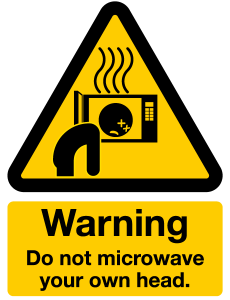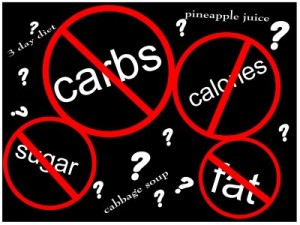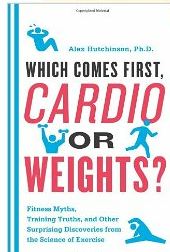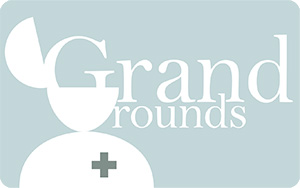May 8th, 2013 by admin in Better Health Network, Health Tips, Quackery Exposed
No Comments »
 Cell phones, microwave ovens, wi-fi, smart meters. What do they have in common? They all emit radiation in the radiofrequency range. And they all radiate controversy. Given that these devices are set to become as commonplace as light bulbs, it is understandable that questions arise about their possible health effects. There are all sorts of allegations that exposure can trigger ailments ranging from headaches to cancer. Allegations, however, do not amount to science. And there is a lot of science to be considered.
Cell phones, microwave ovens, wi-fi, smart meters. What do they have in common? They all emit radiation in the radiofrequency range. And they all radiate controversy. Given that these devices are set to become as commonplace as light bulbs, it is understandable that questions arise about their possible health effects. There are all sorts of allegations that exposure can trigger ailments ranging from headaches to cancer. Allegations, however, do not amount to science. And there is a lot of science to be considered.
Let’s start with the fact that an alternating current flowing through a wire generates an electromagnetic field around it. This field can be thought of as being made up of discrete bundles of energy called “photons” that are created as the electrons in the wire flow first in one direction then in the other. Photons spread out from the wire, their energy depending on the frequency with which the current changes direction. The number of photons emitted, referred to as the ‘intensity’ or ‘power” of the radiation, depends on the voltage, the current and the efficiency of the circuit to act as an antenna.
In ordinary household circuits, the direction of the current changes sixty times a second, that is, it has a frequency of 60 Hz, the unit being named after Heinrich Rudolf Hertz, the first scientist to conclusively prove the existence of electromagnetic waves. The photons emitted by such a circuit travel through space and have the capacity to induce a 60Hz current in any conducting material they encounter. Essentially, we have a “transmitter” and a “receiver.” If special circuitry is used to produce current in the range of 10 million (10MHz) to 300 billion Hz (300 GHz), the photons emitted are said to be in the radiofrequency region of the electromagnetic spectrum. That’s because with appropriate modulation at the transmitter (amplitude modulation (AM), or frequency modulation (FM)) these photons can induce a current in an antenna that can be converted into sounds or images.
But what happens when photons in this energy range interact with living tissue, such as our bodies? The greatest concern would be the breaking of bonds between atoms in molecules. Disrupting the molecular framework of proteins, fats and particularly nucleic acids can lead to all sorts of problems, including cancer. However, photons associated with radiofrequencies do not have enough energy to do this, no matter what their intensity. An analogy may be in order.
Consider a weather vane sitting on a roof. It is mounted on a sturdy metal rod, but of course can spin. You decide you want to knock it off the roof, but all you have are tennis balls. You start throwing the balls, but even if you hit the support, nothing happens. You just can’t impart enough energy to the ball to have it break a metal rod. And it doesn’t matter if you gather all your friends, and they all throw balls at the same time. You may have increased the “intensity” of your efforts, but it doesn’t matter, because no ball has enough energy. Of course if you had a cannon, you could knock down the target with one shot. That’s why high energy photons such as generated by very high frequency currents, as in x-rays, are dangerous. They can break chemical bonds! While you are not going to damage the weather vane with the tennis balls, you can surely make it spin, and the friction generated will heat up the base, the extent depending on how many balls are thrown.
Now, back to our photons. In the radiofrequency region, no photon has enough energy to break chemical bonds, but they can make molecules move around, generating heat. The more photons released, the greater the heating effect. This is exactly how microwave ovens work. They operate at radiofrequencies, but at a very high intensity or “power” level, meaning they bombard the food with lots of photons causing the food to heat up. You certainly wouldn’t want to crawl into a working microwave oven and close the door behind you. Similarly, you wouldn’t want to stand right next to a high power radio transmitting antenna, such as used by radio or TV stations, because you could get burned very badly. But the number of photons encountered drops very quickly with distance as they spread out in all directions, so that even standing a few meters from the base of such an antenna would not cause any sensation of heat. Just think of how quickly the heat released by a light bulb drops off with distance.
The “smart meters” that are being installed by electrical utilities monitor the use of electricity and relay the information via a built-in radio transmitter. But the radiation to which people are exposed from these meters quickly drops off with distance, as with the light bulb, and is way below established safety limits. Furthermore, the smart meters only transmit for a few milliseconds at a time for a grand total of a few minutes a day! Cordless phones, cell phones, routers, baby monitors, video game controls and especially operating microwave ovens expose us to similar radiation, usually at far higher levels. Smart meters are responsible for a very small drop in the radiofrequency photon bucket.
It must be pointed out, though, that safety standards are essentially based on the heating of tissues. But what about the possibility of “non-thermal” effects? What if radiofrequency photons cause damage by some other mysterious mechanism? Over the last 30 years more than 25,000 peer-reviewed papers have been published on electromagnetic fields and health, many devoted to non-thermal effects. Health agencies do not find present evidence persuasive of a hazard at ordinary exposure levels, and given the extent of research that has been carried out, it is unlikely that one will be identified in the future.
Although an overwhelming number of studies on cell phones and brain cancer have shown no effect, admittedly some have suggested a barely detectable link. Despite the weak evidence, the International Agency for Research on Cancer has classified electromagnetic fields associated with radiofrequencies as “possibly carcinogenic,” indicating a level of suspicion without any implication that the fields actually cause cancer. This notion pertains to cell phone use and has nothing to do with the far weaker fields associated with wi-fi and smart meters. I would have no issue with a smart meter in my house.
What then about those consumers who claim they have developed symptoms after smart meters were installed? I think it is appropriate to consider John Milton’s poetic view of the power of imagination: “The mind is its own place, and in itself can make a heaven of hell and a hell of heaven.”
***
Joe Schwarcz, Ph.D., is the Director of McGill University’s Office for Science and Society and teaches a variety of courses in McGill’s Chemistry Department and in the Faculty of Medicine with emphasis on health issues, including aspects of “Alternative Medicine”. He is well known for his informative and entertaining public lectures on topics ranging from the chemistry of love to the science of aging. Using stage magic to make scientific points is one of his specialties.
December 7th, 2012 by Dr. Val Jones in Health Tips
No Comments »
 This year’s Fit Family Challenge competitors are smart, savvy, and full of great nutrition-related questions! I just finished a one hour conference call with 10 family finalists from across the U.S. and Hawaii. As part of their challenge to adopt healthy diet and exercise practices, they were asked to send me their most burning nutrition questions. One mom told me that her goal was “to teach her girls how to think critically” about health information. I was so pleased to see those values being promoted that I thought I’d share some of our mythbusting FAQs here on the blog:
This year’s Fit Family Challenge competitors are smart, savvy, and full of great nutrition-related questions! I just finished a one hour conference call with 10 family finalists from across the U.S. and Hawaii. As part of their challenge to adopt healthy diet and exercise practices, they were asked to send me their most burning nutrition questions. One mom told me that her goal was “to teach her girls how to think critically” about health information. I was so pleased to see those values being promoted that I thought I’d share some of our mythbusting FAQs here on the blog:
1. I live in a community that doesn’t add fluoride to the public water supply. Do my kids need to take fluoride supplements?
Fluoridation of our water supply is considered to be one of the top 10 most effective public health initiatives of the 20th century. Enhancing the natural fluoride content of water results in up to a 60% reduction in tooth decay for kids! The cost to a community of adding fluoride to the water supply is about 50 cents per person per year, so it’s really quite affordable. I’m not sure why your community water hasn’t been fluoridated, but it’s estimated that about 1/3 of Americans still live in communities that haven’t supplemented their water with fluoride (so you’re not alone).
Our teeth use fluoride to strengthen our enamel – and we can get fluoride to our teeth in two ways: 1) from our blood stream (e.g from the water we drink, digest, and absorb) and 2) topically (e.g. from toothpaste). Studies have shown that it’s best to get fluoride via both routes for optimal enamel strength. For children living in areas where the water is not fluoridated, the American Dental Association (ADA) recommends fluoride vitamins until at least age 16. There are two strengths of fluoride vitamins, and the dosage required depends on the fluoride levels in the local water supply (you can ask your local Water Department for that information if you haven’t already). Keep in mind that most children’s permanent teeth (with the exception of “wisdom teeth”) erupt by age 13 – and before that age there is no way to get fluoride to them except via the blood stream. So digesting fluoride (via water or vitamins) is critical to strengthen those teeth that haven’t broken through the gums yet.
For more information about fluoride, see this helpful ADA guide.
2. Should parents be concerned about hormone levels in milk? Is there an advantage to buying organic milk?
All mammals release trace amounts of hormones into their milk. Cow’s milk naturally contains a small amount of bovine somatotropin (bST) which is a protein that is quickly broken down by our stomachs when we drink milk. Some farmers give their cows additional amounts of the hormone to stimulate milk production. This rbST (or BGH) is virtually identical to naturally occurring cow hormones and the decades of research we’ve collected has been reviewed by the FDA (Food and Drug Association), WHO (World Health Organization), NIH (National Institutes of Health), AMA (American Medical Association), and ADA (American Dietetic Organization) – and all agree that rbST is safe for human consumption in the levels it occurs in cow’s milk. Interestingly, studies have shown that milk hormone levels in organic milk is essentially identical to levels in regular milk. There is therefore no advantage in buying organic milk insofar as hormones are concerned.
I believe that cow’s milk is safe and nutritious for kids (so long as they have no milk allergies or lactose intolerances). The milk/hormone scare is kind of an urban legend, so I wouldn’t be too worried about it. Your girls haven’t suffered any harm from drinking regular milk – and it’s great that you all enjoy the skim variety, by the way. Lower calorie options can help you maintain your weight over your lifetime.
For more information about milk and hormones please check out this helpful link full of research resources.
3. Are there lifestyle choices that I can make to reduce my risk of getting cancer? Can vitamins help?
You are right that there are lifestyle choices that can substantially reduce your risk (and your childrens’ risk) of getting cancer. However, there is no way to guarantee that you’ll never get cancer, no matter how carefully you control your diet and lifestyle. Nevertheless it’s an excellent idea to do what we can to reduce our risks. Cancer is actually a complicated collection of different diseases, and so specific behavior changes may reduce the risk of certain cancers but not others. For example, a high fiber diet may reduce the risk of colon cancer, but not skin cancer.
Also note that it’s very hard to prove that any one dietary change (such as consuming a larger amount of one particular vitamin or herb) has a direct impact on cancer risk. What works is sometimes more general (such as avoiding becoming obese). Here are some behavior changes that have been scientifically proven to reduce cancer risks or prevent certain cancers:
1. Smoking cessation
2. Regular use of sunscreen
3. A diet rich in fiber (i.e.lots of fruits and veggies and whole grains)
4. Maintaining a healthy weight
5. Regular exercise
6. HPV vaccines (especially for young girls – can prevent cervical cancer) and hepatitis vaccines (can prevent liver cancer)
7. Drinking very little alcohol (no more than 1 drink/day)
Screening for cancer is also important – because catching a cancer early is often the best way to cure it. The most effective screening tests are:
1. Colonoscopies (for adults over age 50)
2. PAP smears (for sexually active women and women who haven’t had hysterectomies)
3. Physical exams to check for skin cancer, oral cancer, and testicular cancers
Mammograms and prostate blood tests are less effective at catching cancers early, but they are recommended by most medical professional associations.
I recommend reading this page at the National Cancer Institute for more information about avoiding cancer risk factors:
Multivitamins are not recommended for cancer prevention. Although it would seem that vitamins could help reduce the risk of cancer, large studies have shown that they do not reduce the risk of cancer, and may even increase one’s risk (especially vitamin E.) The best source of vitamins is healthy food – and their fiber benefits are excellent as well. For a nice summary of the unhelpfulness of vitamin supplements, please see this ABC News summary of recent research.
July 9th, 2012 by Dr. Val Jones in Book Reviews, Health Tips
1 Comment »
 I just finished reading a great little book called, “Which Comes First, Cardio Or Weights? Fitness Myths, Training Truths, And Other Surprising Discoveries From The Science Of Exercise” by Alex Hutchinson, Ph.D. I’m very grateful to Alex for patiently sifting through over 400 research studies in a quest to answer (with evidence, not subjective opinion) some of our most nagging exercise questions.
I just finished reading a great little book called, “Which Comes First, Cardio Or Weights? Fitness Myths, Training Truths, And Other Surprising Discoveries From The Science Of Exercise” by Alex Hutchinson, Ph.D. I’m very grateful to Alex for patiently sifting through over 400 research studies in a quest to answer (with evidence, not subjective opinion) some of our most nagging exercise questions.
Alex is the perfect guy to do this exercise myth-busting as he is a competitive runner, professional journalist, and has a Ph.D. in physics. His writing is crisp, uncluttered, and bears the understated humor of a Canadian. To be honest, I enjoyed his book so much that I was contemplating blogging about most of his conclusions. However, I don’t want to teeter on the edge of copyright infringement, so I’ll just provide you with some highlights from my favorite sections of the book:
1. Do compression garments help you exercise? I’ve wondered this many times as I jiggled my way down the road on a long run. I’ve always liked the theory behind tight outer-garments, that they reduce unnecessary movement during running, thus making one’s movement more efficient and reducing the bounce and drag on muscles and skin. They may also help with blood return to the heart and reduction in peripheral edema, speeding recovery from exercise. Believing the plausibility of the argument, I have indeed sprung for some rather expensive running tights.
So what does the scientific literature have to say about compression garments’ role in exercise? Apparently there is nothing conclusive yet. Small studies have shown no clear improvement in exercise economy, athletic power or endurance, or recovery from exercise. The only measurable benefits appear to have occurred in those who believed that the compression garments would help their performance. A nice reminder of the importance of the “mind-body” connection in athletic pursuits. Bottom line: if you like how you feel in compression garments, by all means wear them. But don’t expect any dramatic improvements in anything more than your jiggle factor.
2. Will sitting too long at work counteract all my fitness gains? The short answer to this question is: possibly. I was surprised to note that at least one large study found that sitting for more than six hours per day increased one’s risk of death by 18-37% regardless of how much exercise one performed in the other eighteen hours of the day. Long periods of sitting appear to be quite bad for your health, so getting up and moving around every hour or more is important if you have a sedentary job or lifestyle.
3. Does listening to music or watching TV help or hurt my workout? Listening to faster-tempo music can result in increased exercise effort (in many cases completely unconsciously), while TV-watching usually results in a reduced exercise effort. This is because watching videos requires visual attention and subtle changes in balance and movement occur to accomplish it.
4. Will stretching help me avoid injuries? As a person with limited flexibility, I found this section of the book to be quite comforting. As I have blogged previously, stretching has not been shown to reduce the risk of injury or post-exercise soreness. In fact, it can decrease power and speed for certain athletes, though it is important for those who intend to perform great feats of flexibility (such as gymnastics).
5. Should I take pain killers for post-workout soreness? Interestingly, non-steroidal anti-inflammatory drugs (NSAIDs) are not particularly effective in reducing post-exercise pain and can even interfere with muscle repair. NSAIDs block prostaglandins, which are important in collagen synthesis. While NSAIDs are useful in reducing inflammation and swelling in acute injuries (such as an ankle sprain), general muscle soreness isn’t a good reason to pop some ibuprofen.
6. Will drinking coffee help or hinder my performance? I’m one of the few people I know who doesn’t drink coffee, so I was surprised to discover that I may have been missing out on an important exercise enhancer. According to decades of research, caffeine is likely to improve your exercise performance. Studies have shown that pure caffeine (not necessarily in its coffee form) enhances sprint performance as well as endurance activities up to two hours. In 2004 the World Anti-Doping Agency removed caffeine from its list of restricted substances, so expect to see some caffeinated athletes in this summer’s Olympics.
7. What’s the best way to breathe during exercise? If you’ve ever marveled at your own panting, you’ve also probably wondered if there is a more efficient way to breathe – or at least a less embarrassing way. The answer is no. Studies have shown that people who consciously work to make their breathing less labored expend more energy and get less oxygen in the process. So, keep on breathing the way your body wants to… you’re naturally more efficient at it than you think.
I hope that these little tidbits have whet your appetite for more of Alex’s excellent insights. I have fully equipped myself with fast-paced music and a little caffeine, as I move my inflexible, jiggly, panting self down the road on another long run.
November 8th, 2011 by Dr. Val Jones in Medblogger Shout Outs
2 Comments »
 As regular readers of the Better Health blog already know, I am opposed to health misinformation. In fact, I started this very blog because of my disappointment with the sheer volume of false claims, misleading stories, and pseudoscience actively promoted to patients.
As regular readers of the Better Health blog already know, I am opposed to health misinformation. In fact, I started this very blog because of my disappointment with the sheer volume of false claims, misleading stories, and pseudoscience actively promoted to patients.
It was my hope that gathering together key medical blogger “voices of reason” would promote health sanity on Google. You could argue that we’re tilting at windmills, but tilt we must – and I’m proud to say that our membership now includes contributions from the CDC, the American College of Physicians, Harvard Health publications, Diario Medico (Spain’s premier MD website) and over 100 independent bloggers who are standing with us in an attempt to provide smart health commentary to patients and providers alike.
And with that, let us begin our terrific Grand Rounds tradition (now in its eighth year – which in blog years is about 120) of highlighting this week’s best of the medical blogosphere… (And yes, that’s me with Mythbuster’s TV host Adam Savage, circa 2009).

Adam Savage & Dr. Val Jones
Myth #1: Coca-Cola will turn teenagers into homicidal maniacs.
Toni Brayer, M.D. of the Everything Health blog, finds the connection between drinking Coca-Cola and teenage violence laughable. Junk science is scarfed up by the media before the truth can get its wrapper opened. For more amusement, check out the newspaper headline on her blog: “Bananas As Good As Drugs For Treating HIV, Say Scientists.” Were these the scientists from the Planet of the Apes? Just sayin’.
Myth #2: Popular dietary supplements deliver on all their promises.
Jessica Berthold at ACP Hospitalist discovered a fascinating evidence graphic for vitamins and supplements during a presentation by Dr. Brent Bauer. “Which supplements work?” You may ask. Follow the bouncing bubbles. This site has an interesting, interactive graphic that illustrates both the number of Web search hits for health supplements like fish oil and garlic, and the evidence that the supplements work. (The bubble size illustrates # of hits, and the position of the bubble shows strength of evidence.)
Myth #3: Drinking cold water will make you lose weight.
Ryan DuBosar at the ACP Internist, offers the cold, hard truth about water and weight loss. Does drinking cold water really help you lose weight? It’s an urban myth with some truth to it. While it’s probable that drinking water before a meal induces satiation sooner, the number of calories that it takes to warm up a liter of ice water is fairly small and is unlikely to induce weight loss.
Myth # 4: Health screenings are not necessary.
Elaine Schattner, M.D. at Medical Lessons blog, is concerned about one-sided reporting on the downsides of mammograms. She reminds us that epidemiologists are not oncologists, and that the Dartmouth data may not offer the whole picture regarding cancer prevention and mammography. An ounce of prevention is worth a pound of cure – and for now, mammograms are our best hope.
Rich Fogoros, M.D. at the Covert Rationing Blog, deconstructs the latest prostate screening recommendations, arguing that what’s good from a public health standpoint isn’t necessarily what’s best for the individual. Prostate cancer screenings can save the lives of those whose aggressive cancer is detected early. The question is how to find the people who would benefit. Dr. Rich believes that people should be able to choose for themselves if they’d like to be tested, but worries that it will become exceedingly difficult to do so with the new USPSTF recommendations.
Myth #5: Just because two people have the same disease means they have a lot in common.
The Afternoon Napper (from The Afternoon Nap Society), an anonymous blogger with a rare chronic disease (intimal fibromuscular dysplasia) takes a look at the intricacies of interpersonal relationships in the patient advocate community. In the Napper’s post, “Just Because I Have The Same Disease As You That Doesn’t Mean I Like You—But That’s OK” we discover that having likes and dislikes in common can draw you closer than sharing the same disease or condition.
Myth #6 Sleep is not a key ingredient of a safe hospital stay.
Rita Schwab at Supporting Safer Healthcare, explains why disturbed sleep can make patients sicker. But better yet, she offers practical solutions for reducing noise in the hospital setting.
Myth #7: It’s ok to give enemas to anyone who is constipated.
Joel Topf, M.D. at the Precious Bodily Fluids blog explains why people with impaired kidney function could die if they’re given a Fleets (sodium phosphorous) enema. Citing some pretty horrific case studies, Dr. Topf notes: “Look at that phosphorous! A phosphorous over fifty is like a traffic accident, can’t tear your eyes away. Here’s a simple rule: If the medicine is supposed to go in the butt, don’t feed it to your patient.” Read the rest for some nightmare-inducing lab values.
Myth #8: Hydrochlorothiazide is a good anti-hypertensive medicine.
But wait, there’s more from our nephrologist blogger, Dr. Topf explains how a journal article from NEJM in 2008 changed the treatment of his patients with high blood pressure. He enthusiastically exclaims that:
“I avoid hydrochlorothiazide wherever possible. This usually requires re-jiggering a number of medications but a common switch will be to move patients from a list that looks like this:
- Lisinopril HCT
- Amlodipine
To a list that looks like this:
- ACEi CCB combination pill
- Chlorthalidone
This results in significant improvement in blood pressure control.”
A word to the wise who are managing high blood pressure: check out the ACCOMPLISH trial. It trumps ALLHAT.
Myth #9 Rapid fluid correction in kids with fever and impending shock (caused by infection) is the best way to save their lives.
Paul Auerbach, M.D. at Healthline reviews some interesting new data from a NEJM study suggesting that child mortality actually increases with aggressive IV fluid resuscitation. It is unclear if this remains true for other causes of shock, but as Dr. Topf explained earlier – one must think very carefully before putting large volumes of any fluids in any orifice (or vein) of any patient.
Myth #10: Teens are irredeemably bad drivers and cannot be helped.
Louise Galaska at the CDC Injury Center: Director’s View Blog offers some sobering statistics about teen driving, both regarding how dangerous driving can be (one in three teen deaths is caused by a motor vehicle accident) but in how much safer they can become when a graduated driver’s licensing system (GDL) is implemented. Research suggests that GDL systems are associated with reducing injury crashes by up to 40 percent in 16-year-old drivers. In the end though, there’s no substitute for an engaged parent.
Myth #11: Patient advocates will be quickly and easily integrated into the research design process.
Jessie Gruman, Ph.D., patient advocate extraordinaire at the Center for Advancing Health, is concerned about “patient-centered rhetoric.” In her post, “Getting the Patient’s Perspective in Research: Will PCORI Deliver on its Promise?” she describes the challenges of integrating patient advocates into the research design process.
“Including the patient perspective in research remains a foreign concept to most scientists and as a result, our views may be sought but ignored as the other participants continue doing business as usual. Jargon abounds.”
Jessie’s courage and candor are the reality check needed for PCORI’s success.
Myth#12 My doctor recommended an open hysterectomy because that would be best for me.
David Williams at The Health Business Blog interviews a surgeon who suggests that the type of procedure chosen is not always because it would be best for the patient, but rather more convenient for, or more familiar to, the surgeon. Check out all the hysterectomy options in this recent interview and podcast.
Myth #13: Cutting physician Medicare/Medicaid payments will help us do more with less.
David Harlow at the HealthBlawg describes some of the intricacies of upcoming legislative battles as congress and CMS try to negotiate a way to decrease healthcare spending by instituting “value-based modifier codes” to incentivize quality care while cutting physician reimbursement rates. Do not read this post if you are already depressed and confused. I numbered it “myth 13” for a reason!
Myth #14: Discount drug coupons save money.
Dr. Ed Pullen at Dr.Pullen.com argues that they may save money in the short-term – but watch out- it may be a ruse to keep patients from switching to less expensive generic drugs, and saving money long-term.
Myth #15: There’s a pill for everything.
Fisher Qua at the Health 3.0 Blog describes the creation of a new disease label (Female Sexual Dysfunction) primarily driven by companies hoping to discover and sell a new women’s blockbuster equivalent of Viagra. Funny how the label didn’t stick when there was no pill discovered to treat it?
Alright dear readers, that’s all the myths we can bust this week. Please check out Grand Rounds’ next host, the Sharp Brains blog so bring your A game!
October 6th, 2011 by StevenWilkinsMPH in Opinion
No Comments »

Irrational exuberance was a term once used to describe the stock market before the last crash. It also seems an apt description for much of the talk these days about empowered health consumers.

To be sure, patients today have unprecedented access to health information. Patient decision-support tool can be found on just about every provider, payer and self-insured employer website. Consumers can go to any number of websites to find quality data about hospitals, physicians and health plans. Personal health records (PHRs) promise to make our personal health data portable for meaning that all our treating physicians will be “singing off the same song sheet.”
That’s what the industry experts tell us. But what’s really going on? Here I will describe what I see as the top 5 myths about empowered health consumers. Read more »
*This blog post was originally published at Mind The Gap*
 Cell phones, microwave ovens, wi-fi, smart meters. What do they have in common? They all emit radiation in the radiofrequency range. And they all radiate controversy. Given that these devices are set to become as commonplace as light bulbs, it is understandable that questions arise about their possible health effects. There are all sorts of allegations that exposure can trigger ailments ranging from headaches to cancer. Allegations, however, do not amount to science. And there is a lot of science to be considered.
Cell phones, microwave ovens, wi-fi, smart meters. What do they have in common? They all emit radiation in the radiofrequency range. And they all radiate controversy. Given that these devices are set to become as commonplace as light bulbs, it is understandable that questions arise about their possible health effects. There are all sorts of allegations that exposure can trigger ailments ranging from headaches to cancer. Allegations, however, do not amount to science. And there is a lot of science to be considered.

 This year’s
This year’s I just finished reading a great little book called, “
I just finished reading a great little book called, “ As regular readers of the Better Health blog already know, I am opposed to health misinformation. In fact, I started this very blog because of my disappointment with the sheer volume of false claims, misleading stories, and pseudoscience actively promoted to patients.
As regular readers of the Better Health blog already know, I am opposed to health misinformation. In fact, I started this very blog because of my disappointment with the sheer volume of false claims, misleading stories, and pseudoscience actively promoted to patients.










